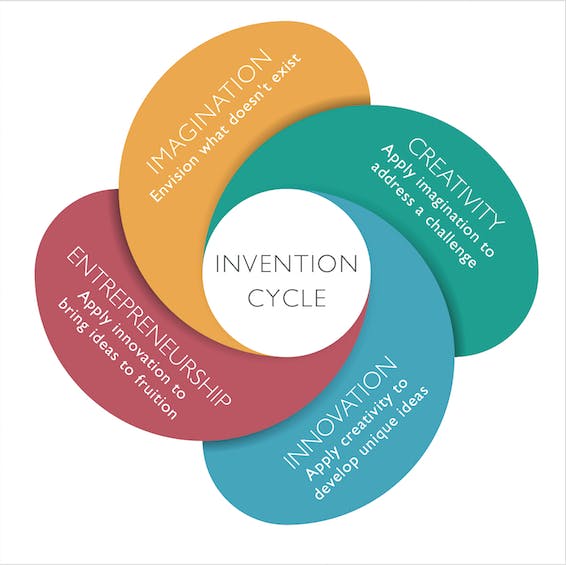Be a quilt maker, not a puzzle builder
Nov 10, 2016
Last week, Dr. Tina Seelig, Stanford Professor on creativity, innovation, and entrepreneurship, introduced our LPs and portfolio CEOs to the Invention Cycle.

She defined each phase — 1) imagination — ability to envision the world differently than it is currently 2) creativity — create new solutions to existing problem 3) innovation — applying creativity to develop unique ideas 4) entrepreneurship — taking action to make it happen. We found it really interesting to separate out the key pieces of the invention cycle that helps teach everyone to be more inventive — both to create new companies and to find opportunities for incremental innovation within existing companies. Doing so makes it clear that everyone can be an innovator — and that diversity of thinking and perspectives can play an important role in making teams more innovative.
Here were some of my key takeaways:
1. Be a quilt maker not a puzzle builder.
Quilt makers take what they have to create a solution to their problem. They use their imagination and creativity to piece together a final product. Puzzle builders merely put the pieces together to fit the final picture on the front of the box. That is, they respond to a problem defined by someone else and if one piece is missing, they are up a creek without a paddle. The key is to be bold and define big problems for yourself — give yourself permission to break the rules and envision what can be different.
2. Create pretotypes.
Experimentation is a crucial step before turning an idea into action. Instead of asking yourself if you can build it, first ask yourself if you should build it. Create pretotypes, fast and little experiments, to test demand, or interest in your hypothesis before you build the product. For example, if McDonald’s wants to test spaghetti, they can simply put it on the menu and see how many people order it. They will tell any prospective spaghetti customers they are out of stock and instead hand them a free hamburger coupon. This gives them instant data. Collecting data and feedback will help you understand if you’re working on an important problem before creating prototypes.
3. Question the questions you ask.
“The question you ask is the frame in which the answer falls.” Reframing and approaching the problem in a different way will allow you to create new solutions. You will find that the answer is often layered in the question. There are no bad ideas. The ridiculous and unexpected ideas are sometimes the seed of something interesting. Brainstorming sessions should be fun and filled with laughter! You’re exploring a landscape of potential not making a decision.
4. Inspire others.
The team is far greater than the individual parts. Bringing an idea to life requires persistence and teamwork. No one person needs to embody each of these phases themselves, but you want a team that has people who are strong in each. Inspire others to think bigger and imagine new solutions together.
We took many of Tina’s principles and methods and applied them the next day during the CEO Summit. In particular, we did a brainstorming session on restaurant ideas that was everyone’s favorite session of the day — we laughed, we had fun, and we generated some truly creative ideas. Big thanks to Tina Seelig for coming and inspiring all of us!
